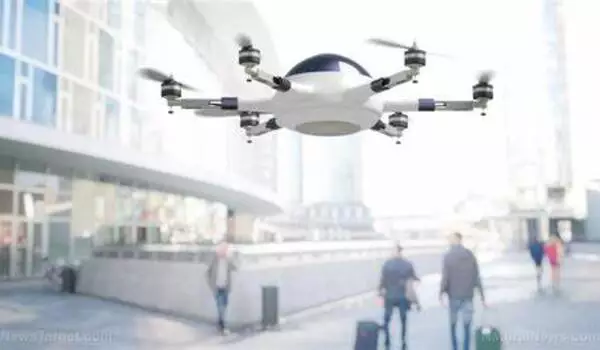The success and broad adoption of air taxis in urban contexts may confront a number of problems, with metropolitan buildings posing considerable challenges. Although air taxis are expected to arrive in our cities in the near future, a new study cautions that laws will be required to prevent dangerous wind gusts over city structures and other urban infrastructure.
The air taxi sector is almost set to take off, with corporations like Boeing, Hyundai, Airbus, and Toyota constructing fleets to transport commuters through the skies. Europe and the United States have both established new guidelines to allow air taxis to begin operations within the next decade, and Australia’s Civil Aviation Safety Authority (CASA) is expected to follow suit.
Recent studies have shown how abrupt wind gusts arise around city buildings and potentially destabilize airplanes, including a recent article by RMIT University’s Uncrewed airplanes Systems (UAS) Research Team.
Dr Abdulghani Mohamed, the lead researcher and aeronautical engineer who has studied wind gust dynamics for over a decade, believes that this element needs to be effectively addressed by regulation in Australia and elsewhere before we flood our city skies with air taxis and other drones.
Regulations and certification need to specifically address safe operation when traversing building flow fields. Along with determining the location of vertiports – where these vehicles will take off and land – we must also identify hazardous regions to avoid.
Dr Abdulghani Mohamed
Strong wind gusts form around city buildings
Wind gusts represent a problem to low-flying aircraft because they land and take off at low speeds, according to Mohamed, with RMIT study finding that abrupt wind gusts can offer substantial safety challenges for air taxis and drones in less than a second.
As a result, air taxis and drones will require more power to land or take off in cities than in airports or wide spaces, he noted.
“These aircraft require powerful motors that can rapidly change the thrust generated by the propellers to quickly force the vehicle back on course, a process that requires more energy,” Mohamed of the School of Engineering explained.

Making our city skies safe
Regulations for Advanced Air Mobility (AAM) aircraft, such as future air taxis, are being compiled around the world, including the US and Europe. The RMIT team emphasises that weather frameworks are needed to ensure this new technology is safe and reliable.
“Regulations and certification need to specifically address safe operation when traversing building flow fields,” Mohamed said. He argues that site-specific wind simulations and measurements are essential to identify hazardous regions.
“Along with determining the location of vertiports – where these vehicles will take off and land – we must also identify hazardous regions to avoid.” This would improve safety and prevent fleet interruption due to wind conditions,” Mohamed explained.
“In Australia, it is unclear whether this falls under the jurisdiction of CASA or the Bureau of Meteorology; however, air taxis will require weather information at much higher resolution and at much faster rates than is currently possible.” This is critical for flight planning. The margin for mistake will be much smaller than at airports, where huge planes can withstand much greater winds. We won’t have that freedom with city air taxis.”
Next steps
“With purpose-built vertiports, we could incorporate geometric design features to reduce the occurrence of hazardous flow conditions, which we are currently investigating,” Mohamed explained.
“Existing buildings can also be repurposed as vertiports, but modifications to improve aerodynamics near the landing pads may be required. The effectiveness of such design improvements can be evaluated through scaled tests in wind tunnels or full-scale measurements. Extensive full-scale wind flow mapping will no longer be intimidating in the future. We are continuing to enhance our wind sensing drones – a swarm of drones equipped with wind anemometers – in order to map around major infrastructure extremely accurately.”
















